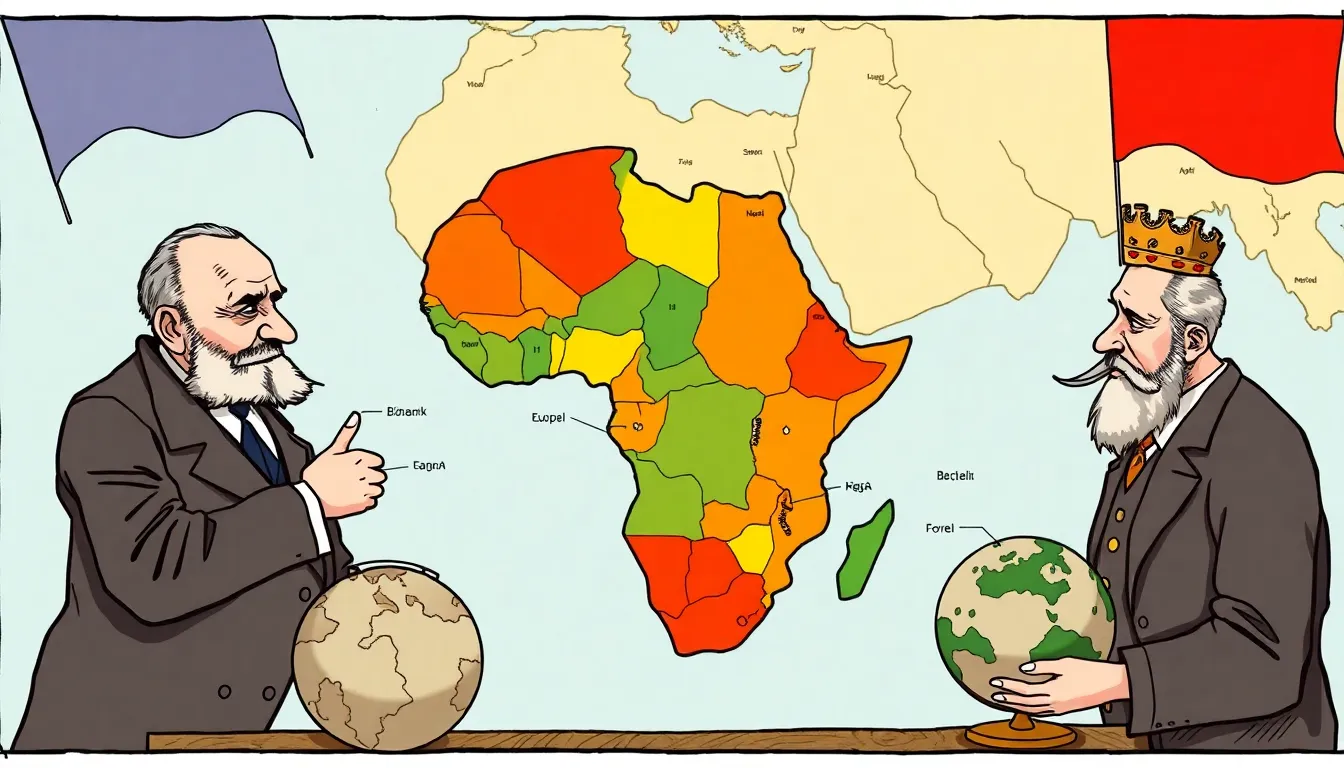Table of Contents
ToggleIn the world of political satire, few moments capture the absurdity of diplomacy like the Berlin Conference of 1884. Imagine a group of powerful leaders gathered around a table, carving up an entire continent like it’s a pizza at a party. This gathering not only shaped the future of Africa but also sparked a wave of political cartoons that still tickle the funny bone today.
These cartoons cleverly expose the ridiculousness of imperial ambitions and the often comical misunderstandings between nations. With exaggerated caricatures and sharp wit, they invite viewers to reflect on the serious consequences of colonialism while sharing a good laugh. Dive into the world of these political cartoons, and discover how humor can shine a light on history’s most serious moments.
Understanding the Berlin Conference Political Cartoon
Political cartoons of the Berlin Conference capture the absurdity of the event where leaders divided Africa among themselves. These illustrations provide critical insights into the imperialist mindset of the era.
Historical Context
The Berlin Conference occurred in 1884, during a time when European powers aggressively pursued colonial expansion. Nations like Britain, France, and Germany sought control over African territories for resources and strategic advantages. Amidst this scramble for Africa, delegates convened to negotiate boundaries without considering the continent’s diverse cultures and peoples. The absurdity of the entire process yielded both outrage and humor, inspiring artists who created cartoons to express their discontent. Satirical depictions highlighted how arbitrary divisions undermined Africa’s political and social fabric.
Significance of Political Cartoons
Political cartoons played a crucial role in shaping public perception during the colonial period. By using humor and exaggeration, they criticized imperial ambitions and revealed the consequences of colonization. These illustrations fostered dialogue about morality and justice in a time of profound exploitation. Artists appealed to audiences by presenting complex issues in a relatable way, making serious topics more accessible. Such cartoons not only entertained but also educated, prompting viewers to reconsider their views on colonialism and its impacts on Africa and beyond.
Analyzing the Cartoon

Political cartoons from the Berlin Conference era reveal both humor and critique of colonialism. They depict powerful leaders carving Africa into sections without consideration for its people.
Key Elements of the Cartoon
Dramatic imagery characterizes these cartoons. Caricatures of leaders, such as Otto von Bismarck and King Leopold II, illustrate their larger-than-life personalities. Vivid colors often highlight elements of greed and arrogance. Symbolic objects, like maps and globes, emphasize the arbitrary division of territories. Satirical captions frequently accompany the visuals, engaging viewers with sharp wit.
Message Conveyed
The cartoons expose the absurdity of imperial ambitions. They portray leaders as gluttonous figures, eagerly slicing up Africa like a pizza. Humor serves as a vehicle for critique, inviting viewers to reflect on the moral implications of colonization. Artists convey the idea that these decisions disregard cultural diversity and human rights. By blending satire with social commentary, these cartoons encourage audiences to question the consequences of exploitation and greed.
Impact and Interpretation
Political cartoons from the Berlin Conference period generated significant commentary on imperialism and colonial practices. Their humor and satire engaged the public, creating a dialogue about colonial exploitation and its moral implications.
Public Reception
Public reaction to the political cartoons varied widely. Some found humor in the exaggerated representations of leaders, while others felt the satire highlighted serious issues surrounding colonialism. Many viewers appreciated the ability of cartoons to simplify complex topics, making them accessible and relatable. The sharp wit prompted conversations among different classes, emphasizing the absurdity of foreign powers slicing Africa into territories. Increased awareness of colonial operations emerged from these discussions, reflecting differing attitudes toward imperial ambitions.
Influence on Political Discourse
Political cartoons shaped discourse around imperialism in a unique way. Their critiques inspired debates about morality, justice, and the impact of colonial rule on African societies. Audiences began reconsidering established narratives and questioned the legitimacy of colonial endeavors. As satirical illustrations circulated, they reached policymakers, drawing attention to public sentiment on colonial practices. Impactful images and sharp captions raised awareness that persisted beyond the era, influencing future discussions on imperialism and its legacy.
The political cartoons inspired by the Berlin Conference serve as powerful reminders of the absurdity and consequences of colonialism. They not only critique the actions of powerful leaders but also illuminate the broader implications of dividing a continent without regard for its diverse cultures. Through humor and satire, these illustrations challenge audiences to reflect on the moral complexities of imperial ambitions.
As these cartoons circulated, they sparked important conversations about justice and exploitation. They transformed public perception of colonialism and encouraged critical engagement with its legacy. The lasting impact of these satirical works continues to resonate, reminding us of the need to understand history’s lessons in the context of modern discussions about power and responsibility.




